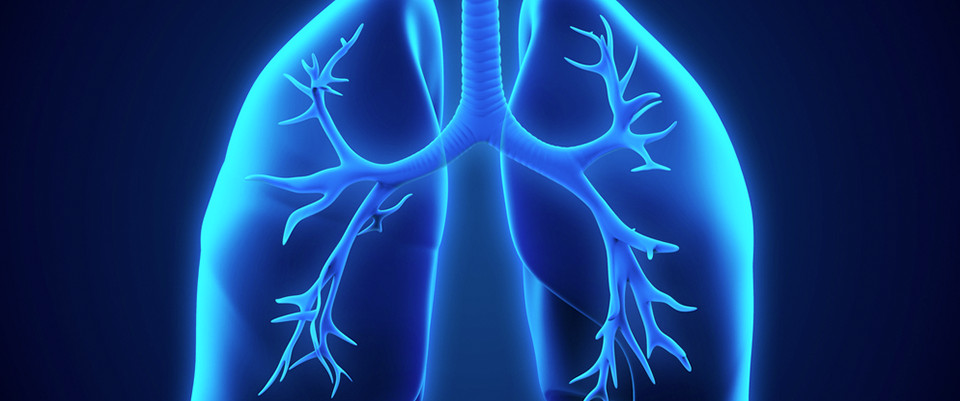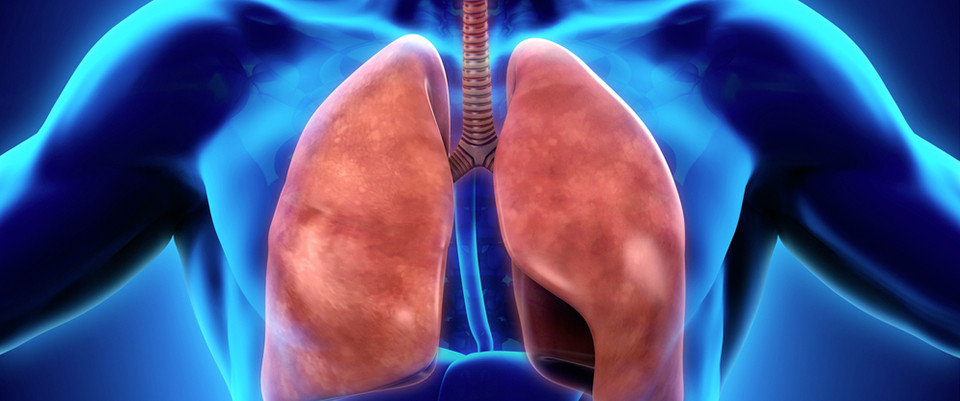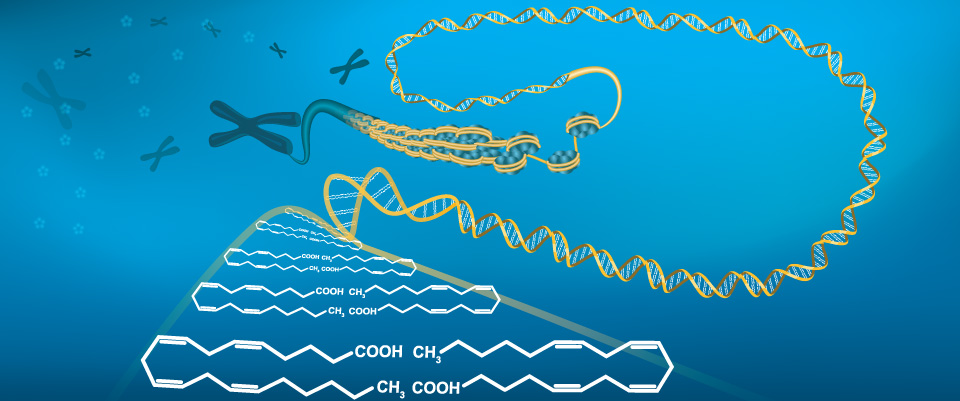PubMed
Impact of in vitro phytohormone treatments on the metabolome of the leafy liverwort Radula complanata (L.) Dumort
Metabolomics. 2023 Mar 9;19(3):17. doi: 10.1007/s11306-023-01979-y.ABSTRACTINTRODUCTION: Liverworts are a group of non-vascular plants that possess unique metabolism not found in other plants. Many liverwort metabolites have interesting structural and biochemical characteristics, however the fluctuations of these metabolites in response to stressors is largely unknown.OBJECTIVES: To investigate the metabolic stress-response of the leafy liverwort Radula complanata.METHODS: Five phytohormones were applied exogenously to in vitro cultured R. complanata and an untargeted metabolomic analysis was conducted. Compound classification and identification was performed with CANOPUS and SIRIUS while statistical analyses including PCA, ANOVA, and variable selection using BORUTA were conducted to identify metabolic shifts.RESULTS: It was found that R. complanata was predominantly composed of carboxylic acids and derivatives, followed by benzene and substituted derivatives, fatty acyls, organooxygen compounds, prenol lipids, and flavonoids. The PCA revealed that samples grouped based on the type of hormone applied, and the variable selection using BORUTA (Random Forest) revealed 71 identified and/or classified features that fluctuated with phytohormone application. The stress-response treatments largely reduced the production of the selected primary metabolites while the growth treatments resulted in increased production of these compounds. 4-(3-Methyl-2-butenyl)-5-phenethylbenzene-1,3-diol was identified as a biomarker for the growth treatments while GDP-hexose was identified as a biomarker for the stress-response treatments.CONCLUSION: Exogenous phytohormone application caused clear metabolic shifts in Radula complanata that deviate from the responses of vascular plants. Further identification of the selected metabolite features can reveal metabolic biomarkers unique to liverworts and provide more insight into liverwort stress responses.PMID:36892716 | DOI:10.1007/s11306-023-01979-y
Bioherbicidal Activity and Metabolic Profiling of Allelopathic Metabolites of Three Cassia species using UPLC-qTOF-MS/MS and Molecular Networking
Metabolomics. 2023 Mar 9;19(3):16. doi: 10.1007/s11306-023-01980-5.ABSTRACTINTRODUCTION: Compared to synthetic herbicides, natural products with allelochemical properties can inhibit weed germination, aiding agricultural output with less phytotoxic residue in water and soil.OBJECTIVES: To identify natural product extracts of three Cassia species; C. javanica, C. roxburghii, and C. fistula and to investigate the possible phytotoxic and allelopathic potential.METHODS: Allelopathic activity of three Cassia species extracts was evaluated. To further investigate the active constituents, untergated metabolomics using UPLC-qTOF-MS/MS and ion-identity molecular networking (IIMN) approach was performed to identify and determine the distribution of metabolites in different Cassia species and plant parts.RESULTS: We observed in our study that the plant extracts showed consistent allelopathic activity against seed germination (P < 0.05) and the inhibition of shoot and root development of Chenopodium murale in a dose-dependent manner. Our comprehensive study identified at least 127 compounds comprising flavonoids, coumarins, anthraquinones, phenolic acids, lipids, and fatty acid derivatives. We also report the inhibition of seed germination, shoot growth, and root growth when treated with enriched leaf and flower extracts of C. fistula, and C. javanica, and the leaf extract of C. roxburghii.CONCLUSION: The present study recommends further evaluation of Cassia extracts as a potential source of allelopathic compounds in agricultural systems.PMID:36892715 | DOI:10.1007/s11306-023-01980-5
Tissue-Specific Sex Difference in Mouse Eye and Brain Metabolome Under Fed and Fasted States
Invest Ophthalmol Vis Sci. 2023 Mar 1;64(3):18. doi: 10.1167/iovs.64.3.18.ABSTRACTPURPOSE: Visual physiology and various ocular diseases demonstrate sexual dimorphisms; however, how sex influences metabolism in different eye tissues remains undetermined. This study aims to address common and tissue-specific sex differences in metabolism in the retina, RPE, lens, and brain under fed and fasted conditions.METHODS: After ad libitum fed or being deprived of food for 18 hours, mouse eye tissues (retina, RPE/choroid, and lens), brain, and plasma were harvested for targeted metabolomics. The data were analyzed with both partial least squares-discriminant analysis and volcano plot analysis.RESULTS: Among 133 metabolites that cover major metabolic pathways, we found 9 to 45 metabolites that are sex different in different tissues under the fed state and 6 to 18 metabolites under the fasted state. Among these sex-different metabolites, 33 were changed in 2 or more tissues, and 64 were tissue specific. Pantothenic acid, hypotaurine, and 4-hydroxyproline were the top commonly changed metabolites. The lens and the retina had the most tissue-specific, sex-different metabolites enriched in the metabolism of amino acid, nucleotide, lipids, and tricarboxylic acid cycle. The lens and the brain had more similar sex-different metabolites than other ocular tissues. The female RPE and female brain were more sensitive to fasting with more decreased metabolites in amino acid metabolism, tricarboxylic acid cycles, and glycolysis. The plasma had the fewest sex-different metabolites, with very few overlapping changes with tissues.CONCLUSIONS: Sex has a strong influence on eye and brain metabolism in tissue-specific and metabolic state-specific manners. Our findings may implicate the sexual dimorphisms in eye physiology and susceptibility to ocular diseases.PMID:36892534 | DOI:10.1167/iovs.64.3.18
Disease-modifying effects of sodium selenate in a model of drug-resistant, temporal lobe epilepsy
Elife. 2023 Mar 9;12:e78877. doi: 10.7554/eLife.78877. Online ahead of print.ABSTRACTThere are no pharmacological disease-modifying treatments that have an enduring effect to mitigate the seizures and comorbidities associated with established chronic temporal lobe epilepsy (TLE). Sodium selenate has been reported to have anti-epileptogenic effects if given before TLE onset. However, the majority of TLE patients already have established epilepsy when they present to the clinic. This study aimed to evaluate for disease modifying effects of sodium selenate treatment in the chronically epileptic rat post-status epilepticus (SE) model of drug-resistant TLE. Wistar rats underwent kainic acid-induced SE or sham. Ten-weeks post-SE, rats were randomly assigned to receive either sodium selenate, levetiracetam, or vehicle subcutaneous infusions continuously for 4 weeks. To evaluate the effects of the treatments, one week of continuous video-EEG was acquired before, during, and 4, 8 weeks post-treatment, followed by behavioral tests. Targeted and untargeted proteomics and metabolomics were performed on post-mortem brain tissue to identify potential pathways associated with modified disease outcomes. Telomere length has emerged as a potential biomarker of chronic brain conditions, was investigated as a novel surrogate marker of epilepsy disease severity in our current study. The results showed that sodium selenate treatment was associated with mitigation of measures of disease severity at 8 weeks post-treatment cessation; reducing the number of spontaneous seizures (p< 0.05), cognitive dysfunction (p< 0.05 in both novel object placement and recognition tasks), and sensorimotor deficits (p< 0.01). Moreover, in the brain post-mortem selenate treatment was associated with increased protein phosphatase 2A (PP2A) expression, reduced hyperphosphorylated tau, and reversed telomere length shortening (p< 0.05). Network medicine integration of multi-omics/ pre-clinical outcomes identified protein-metabolite modules positively correlated with the TLE phenotype. Our results provide evidence that treatment with sodium selenate results in a sustained disease-modifying effect in chronically epileptic rats in the post-KA SE model of TLE, including improved comorbid learning and memory deficits.PMID:36892461 | DOI:10.7554/eLife.78877
ASS1-mediated reductive carboxylation of cytosolic glutamine confers ferroptosis resistance in cancer cells
Cancer Res. 2023 Mar 9:CAN-22-1999. doi: 10.1158/0008-5472.CAN-22-1999. Online ahead of print.ABSTRACTInduction of ferroptosis, a recently defined form of nonapoptotic cell death caused by iron-dependent lipid peroxidation, has emerged as an anti-cancer strategy. Erastin is a ferroptosis activator that promotes cell death that not only depends on the depletion of cellular cysteine but also relies on mitochondrial oxidative metabolism of glutamine. Here, we demonstrate that ASS1, a key enzyme involved in the urea cycle, plays a crucial role in ferroptosis resistance. Loss of ASS1 increased the sensitivity of non-small cell lung cancer (NSCLC) cells to erastin in vitro and decreased tumor growth in vivo. Metabolomics analysis with stable isotope-labeled glutamine showed that ASS1 promotes reductive carboxylation of cytosolic glutamine and compromises the oxidative TCA cycle from glutamine anaplerosis, reducing mitochondrial-derived lipid reactive oxygen species. Moreover, transcriptome sequencing showed that ASS1 activates the mTORC1-SREBP1-SCD5 axis to promote de novo monounsaturated fatty acid synthesis by utilizing acetyl-CoA derived from the glutamine reductive pathway. Treating ASS1-deficient NSCLC cells with erastin combined with arginine deprivation significantly enhanced cell death compared to either treatment alone. Collectively, these results reveal a previously unknown regulatory role of ASS1 in ferroptosis resistance and provide a potential therapeutic target for ASS1-deficient NSCLC.PMID:36892426 | DOI:10.1158/0008-5472.CAN-22-1999
Cottonseed hydrolysate supplementation alters metabolic and proteomics responses in Chinese Hamster Ovary cell cultures
Biotechnol J. 2023 Mar 9:e2200243. doi: 10.1002/biot.202200243. Online ahead of print.ABSTRACTHydrolysates are used as media supplements although their role is not well characterized. In this study, cottonseed hydrolysates, which contained peptides and galactose as supplemental substrates, were added to CHO batch cultures, enhancing cell growth, IgG titers, and productivities. Extracellular metabolomics coupled with TMT proteomics revealed metabolic and proteomic changes in cottonseed-supplemented cultures. Shifts in production and consumption dynamics of glucose, glutamine, lactate, pyruvate, serine, glycine, glutamate and aspartate suggest changes in TCA and glycolysis metabolism following hydrolysate inputs. Quantitative proteomics revealed 5521 proteins and numerous changes in relative abundance of proteins related to growth, metabolism, oxidative stress, protein productivity, and apoptosis/cell death at day 5 and day 6. Differential abundance of amino acid transporter proteins and catabolism enzymes such as BCAT1 and FAH can alter availability and utilization of several amino acids. Also, pathways involved in growth including the polyamine biosynthesis through higher ODC1 abundance and hippo signaling were upregulated and downregulated, respectively. Central metabolism rewiring was indicated by GAPDH downregulation, which corresponded with re-uptake of secreted lactate in the cottonseed-supplemented cultures. Overall, cottonseed hydrolysate supplementation modified culture performance by altering cellular activities critical to growth and protein productivity including metabolism, transport, mitosis, transcription, translation, protein processing, and apoptosis. Cottonseed hydrolysate, as a medium additive, enhances CHO cell culture performance Metabolite profiling and TMT proteomics characterize its impact on CHO cells Rewired nutrient utilization is observed via glycolysis, amino acid and polyamine metabolism Hippo signaling pathway impacts cell growth in the presence of cottonseed hydrolysate This article is protected by copyright. All rights reserved.PMID:36892270 | DOI:10.1002/biot.202200243
Clinical Metabolomic Landscape of Cardiovascular Physiology and Disease
J Am Heart Assoc. 2023 Mar 9:e027725. doi: 10.1161/JAHA.122.027725. Online ahead of print.NO ABSTRACTPMID:36892040 | DOI:10.1161/JAHA.122.027725
Microbial and metabolic features in renal transplant recipients with post-transplantation diabetes mellitus
Int J Urol. 2023 Mar 9. doi: 10.1111/iju.15158. Online ahead of print.ABSTRACTOBJECTIVE: Post-transplantation diabetes mellitus (PTDM) is a common complication in renal transplant recipients (RTRs). Gut microbiome plays important roles in a variety of chronic metabolic diseases, but its association with the occurrence and development of PTDM is still unknown. The present study integrates the analysis of gut microbiome and metabolites to further identify the characteristics of PTDM.METHODS: A total of 100 RTRs fecal samples were collected in our study. Among them, 55 samples were submitted to Hiseq sequencing, and 100 samples were used for non-targeted metabolomics analysis. The gut microbiome and metabolomics of RTRs were comprehensively characterized.RESULTS: The species Dialister invisus was significantly associated with fasting plasma glucose (FPG). The functions of tryptophan and phenylalanine biosynthesis were enhanced in RTRs with PTDM, while the functions of fructose and butyric acid metabolism were reduced. Fecal metabolome analysis indicated that RTRs with PTDM had unique metabolite distribution characteristics, and two differentially expressed specific metabolites were significantly correlated with FPG. The correlation analysis of gut microbiome and metabolites showed that gut microbiome had an obvious effect on the metabolic characteristics of RTRs with PTDM. Moreover, the relative abundance of microbial function is associated with the expression of several specific gut microbiome and metabolites.CONCLUSIONS: Our study identified the characteristics of gut microbiome and fecal metabolites in RTRs with PTDM, and we also found two important metabolites and a bacterium were significantly associated with PTDM, which might be used as novel targets in the research field of PTDM.PMID:36892039 | DOI:10.1111/iju.15158
Widely Targeted Metabolomics Analysis of Dendrobium officinale at Different Altitudes
Chem Biodivers. 2023 Mar 9:e202201082. doi: 10.1002/cbdv.202201082. Online ahead of print.ABSTRACTIn order to investigate the differences in the chemical composition of Dendrobium officinale at different altitudes, we collected Dendrobium officinale from different altitudes in Guizhou Province, China, and firstly determined its polysaccharide content by using a sulphuric acid-phenol colour development method with reference to the Chinese Pharmacopoeia, and further determined its metabolites by using widely targeted metabolomics, and explored the differences in the chemical composition of Dendrobium officinale at different altitudes using multivariate statistical analysis. We found that the polysaccharide content was higher in plants growing at 1122 m, a total of 902 secondary metabolites were detected by wildly targeted metabolomics, and amino acids and their derivatives were more highly expressed at 1122 m, while other metabolites were more highly expressed at 835 m. Furthermore, we found that the phenolic acid compound nerugein was only present in plants at 835 m, and two lipid compounds, namely Lyso PE 20:4 and its isomer, were only present at 1122 m. Taken together, these results may provide a basis for the selection and clinical application of D. officinale cultivated at different altitudes.PMID:36891987 | DOI:10.1002/cbdv.202201082
The next step in Mendelian randomization
Elife. 2023 Mar 9;12:e86416. doi: 10.7554/eLife.86416.ABSTRACTExpanding a statistical approach called Mendelian randomization to include multiple variables may help researchers to identify new molecular causes of specific traits.PMID:36891986 | DOI:10.7554/eLife.86416
Exploiting the mediating role of the metabolome to unravel transcript-to-phenotype associations
Elife. 2023 Mar 9;12:e81097. doi: 10.7554/eLife.81097.ABSTRACTDespite the success of genome-wide association studies (GWASs) in identifying genetic variants associated with complex traits, understanding the mechanisms behind these statistical associations remains challenging. Several methods that integrate methylation, gene expression, and protein quantitative trait loci (QTLs) with GWAS data to determine their causal role in the path from genotype to phenotype have been proposed. Here, we developed and applied a multi-omics Mendelian randomization (MR) framework to study how metabolites mediate the effect of gene expression on complex traits. We identified 216 transcript-metabolite-trait causal triplets involving 26 medically relevant phenotypes. Among these associations, 58% were missed by classical transcriptome-wide MR, which only uses gene expression and GWAS data. This allowed the identification of biologically relevant pathways, such as between ANKH and calcium levels mediated by citrate levels and SLC6A12 and serum creatinine through modulation of the levels of the renal osmolyte betaine. We show that the signals missed by transcriptome-wide MR are found, thanks to the increase in power conferred by integrating multiple omics layer. Simulation analyses show that with larger molecular QTL studies and in case of mediated effects, our multi-omics MR framework outperforms classical MR approaches designed to detect causal relationships between single molecular traits and complex phenotypes.PMID:36891970 | DOI:10.7554/eLife.81097
Salt Tolerant Gene 1 contributes to salt tolerance by maintaining photosystem II activity in maize
Plant Cell Environ. 2023 Mar 9. doi: 10.1111/pce.14578. Online ahead of print.ABSTRACTSalt stress is a major environmental factor limiting crop growth and productivity. Here, we show that Salt-Tolerant Gene 1 (ZmSTG1) contributes to salt tolerance by maintaining photosystem activity in maize. ZmSTG1 encodes an endoplasmic reticulum localized protein and retrotransposon insertion in the promoter region causes differential expression levels in maize inbred lines. Overexpression of ZmSTG1 improved plant growth vigor, and knockout of ZmSTG1 weakened plant growth under normal and salt stress conditions. Transcriptome and metabolome analyses indicated that ZmSTG1 might regulate the expression of lipid trafficking-related genes dependent on the ABA signalling pathway, thereby increasing the galactolipids and phospholipid concentrations in the photosynthetic membrane under salt stress. Chlorophyll fluorescence parameters showed that the knockout of ZmSTG1 led to significant impairment of plant photosystem II (PSII) activity under normal and salt stress conditions, whereas overexpression of ZmSTG1 dramatically improved plant PSII activity under salt stress conditions. We also demonstrated that the application of the salt-tolerant locus could enhance salt tolerance in hybrid maize plants. Taken together, we propose that ZmSTG1 may modulate the lipid composition in the photosynthetic membrane by affecting the expression of lipid trafficking-related genes to maintain the photosynthetic activity of plants under salt stress. This article is protected by copyright. All rights reserved.PMID:36891878 | DOI:10.1111/pce.14578
ETHYLENE-INSENSITIVE 3-LIKE 2 regulates β-carotene and ascorbic acid accumulation in tomatoes during ripening
Plant Physiol. 2023 Mar 9:kiad151. doi: 10.1093/plphys/kiad151. Online ahead of print.ABSTRACTETHYLENE-INSENSITIVE 3/ETHYLENE-INSENSITIVE 3-LIKEs (EIN3/EILs) are important ethylene response factors during fruit ripening. Here, we discovered that EIL2 controls carotenoid metabolism and ascorbic acid (AsA) biosynthesis in tomato (Solanum lycopersicum). In contrast to the red fruits presented in the wild type (WT) 45 days after pollination, the fruits of CRISPR/Cas9 eil2 mutants and SlEIL2 RNAi lines (ERIs) showed yellow or orange fruits. Correlation analysis of transcriptome and metabolome data for the ERI and WT ripe fruits revealed that SlEIL2 is involved in β-carotene and AsA accumulation. ETHYLENE RESPONSE FACTORs (ERFs) are the typical components downstream from EIN3 in the ethylene response pathway. Through a comprehensive screening of ERF family members, we determined that SlEIL2 directly regulates the expression of four SlERFs. Two of these, SlERF.H30 and SlERF.G6, encode proteins that participate in the regulation of LYCOPENE-β-CYCLASE 2 (SlLCYB2), encoding an enzyme that mediates the conversion of lycopene to carotene in fruits. In addition, SlEIL2 transcriptionally repressed L-GALACTOSE 1-PHOSPHATE PHOSPHATASE 3 (SlGPP3) and MYO-INOSITOL OXYGENASE 1 (SlMIOX1) expression, which resulted in 1.62 fold increase of AsA via both the L-galactose and myoinositol pathways. Overall, we demonstrated that SlEIL2 functions in controlling β-carotene and AsA levels, providing a potential strategy for genetic engineering to improve the nutritional value and quality of tomato fruit.PMID:36891812 | DOI:10.1093/plphys/kiad151
Maternal antibiotic treatment during pregnancy attenuates the transport and absorption of maternal antibody IgG through TLR4 and TLR2 receptor
Front Microbiol. 2023 Feb 17;14:1109273. doi: 10.3389/fmicb.2023.1109273. eCollection 2023.ABSTRACTMaternal antibody IgG, the main antibody in colostrum, plays an important role in neonates protection. Commensal microbiota is closely related to host antibody repertoire. However, there are few reports on how maternal gut microbiota affects maternal antibody IgG transfer. In the present study, we investigated the effects of altering the gut microbiota (treated with antibiotics during pregnancy) on maternal IgG transportation and offspring absorption and explored its underlying mechanisms. Results showed that antibiotic treatment during pregnancy significantly decreased maternal cecal microbial richness (Chao1 and Obesrved species) and diversity (Shannon and Simpson). Plasma metabolome enriched significant changes in the process of bile acid secretion pathway, and the concentration of deoxycholic acid, a secondary metabolite of microorganisms was lowered. Flow cytometry analysis indicated that antibiotic treatment promoted the number of B cells and abated the number of T, DC and M1 cells in intestinal lamina propria of dams. Surprisingly, the serum IgG level in antibiotic treated dams was significantly increased, while IgG contents in colostrum was decreased. Moreover, pregnancy antibiotic treatment in dams was reduced the expression of FcRn, TLR4 and TLR2 in breast of dams and in duodenum and jejunum of neonates. Furthermore, TLR4-/- and TLR2-/- knock-out mice showed a lower FcRn expression in breast of dams and in duodenum and jejunum of neonates. These findings suggest that maternal intestine bacteria may affect the maternal IgG transfer through regulating the breast TLR4 and TLR2 of dams.PMID:36891396 | PMC:PMC9986424 | DOI:10.3389/fmicb.2023.1109273
Antibiofilm activity and NMR-based metabolomic characterization of cell-free supernatant of <em>Limosilactobacillus reuteri</em> DSM 17938
Front Microbiol. 2023 Feb 20;14:1128275. doi: 10.3389/fmicb.2023.1128275. eCollection 2023.ABSTRACTThe microbial biofilm has been defined as a "key virulence factor" for a multitude of microorganisms associated with chronic infections. Its multifactorial nature and variability, as well as an increase in antimicrobial resistance, suggest the need to identify new compounds as alternatives to the commonly used antimicrobials. The aim of this study was to assess the antibiofilm activity of cell-free supernatant (CFS) and its sub-fractions (SurE 10 K with a molecular weight <10 kDa and SurE with a molecular weight <30 kDa), produced by Limosilactobacillus reuteri DSM 17938, vs. biofilm-producing bacterial species. The minimum inhibitory biofilm concentration (MBIC) and the minimum biofilm eradication concentration (MBEC) were determined via three different methods and an NMR metabolomic analysis of CFS and SurE 10K was performed to identify and quantify several compounds. Finally, the storage stability of these postbiotics was evaluated by a colorimetric assay by analyzing changes in the CIEL*a*b parameters. The CFS showed a promising antibiofilm activity against the biofilm developed by clinically relevant microorganisms. The NMR of CFS and SurE 10K identifies and quantifies several compounds, mainly organic acids and amino acids, with lactate being the most abundant metabolite in all the analyzed samples. The CFS and SurE 10 K were characterized by a similar qualitative profile, with the exception of formate and glycine detected only in the CFS. Finally, the CIEL*a*b parameters assess the better conditions to analyze and use these matrices for the correct preservation of bioactive compounds.PMID:36891385 | PMC:PMC9986594 | DOI:10.3389/fmicb.2023.1128275
A putative terpene cyclase gene (<em>CcPtc1</em>) is required for fungal development and virulence in <em>Cytospora chrysosperma</em>
Front Microbiol. 2023 Feb 20;14:1084828. doi: 10.3389/fmicb.2023.1084828. eCollection 2023.ABSTRACTCytospora chrysosperma is a destructive plant pathogenic fungus, which causes canker disease on numerous woody plants. However, knowledge concerning the interaction between C. chrysosperma and its host remains limited. Secondary metabolites produced by phytopathogens often play important roles in their virulence. Terpene cyclases (TC), polyketide synthases (PKS) and non-ribosomal peptide synthetases (NRPS) are the key components for the synthesis of secondary metabolites. Here, we characterized the functions of a putative terpene type secondary metabolite biosynthetic core gene CcPtc1 in C. chrysosperma, which was significantly up-regulated in the early stages of infection. Importantly, deletion of CcPtc1 greatly reduced fungal virulence to the poplar twigs and they also showed significantly reduced fungal growth and conidiation compared with the wild-type (WT) strain. Furthermore, toxicity test of the crude extraction from each strain showed that the toxicity of crude extraction secreted by ΔCcPtc1 were strongly compromised in comparison with the WT strain. Subsequently, the untargeted metabolomics analyses between ΔCcPtc1 mutant and WT strain were conducted, which revealed 193 significantly different abundant metabolites (DAMs) inΔCcPtc1 mutant compared to the WT strain, including 90 significantly downregulated metabolites and 103 significantly up-regulated metabolites, respectively. Among them, four key metabolic pathways that reported to be important for fungal virulence were enriched, including pantothenate and coenzyme A (CoA) biosynthesis. Moreover, we also detected significant alterations in a series of terpenoids, among which (+)-ar-turmerone, pulegone, ethyl chrysanthemumate, and genipin were significantly down-regulated, while cuminaldehyde and (±)-abscisic acid were significantly up-regulated. In conclusion, our results demonstrated that CcPtc1 acts as a virulence-related secondary metabolism factor and provides new insights into the pathogenesis of C. chrysosperma.PMID:36891381 | PMC:PMC9986285 | DOI:10.3389/fmicb.2023.1084828
Biomarker discovery for tuberculosis using metabolomics
Front Mol Biosci. 2023 Feb 20;10:1099654. doi: 10.3389/fmolb.2023.1099654. eCollection 2023.ABSTRACTTuberculosis (TB) is the leading cause of death among infectious diseases, and the ratio of cases in which its pathogen Mycobacterium tuberculosis (Mtb) is drug resistant has been increasing worldwide, whereas latent tuberculosis infection (LTBI) may develop into active TB. Thus it is important to understand the mechanism of drug resistance, find new drugs, and find biomarkers for TB diagnosis. The rapid progress of metabolomics has enabled quantitative metabolite profiling of both the host and the pathogen. In this context, we provide recent progress in the application of metabolomics toward biomarker discovery for tuberculosis. In particular, we first focus on biomarkers based on blood or other body fluids for diagnosing active TB, identifying LTBI and predicting the risk of developing active TB, as well as monitoring the effectiveness of anti-TB drugs. Then we discuss the pathogen-based biomarker research for identifying drug resistant TB. While there have been many reports of potential candidate biomarkers, validations and clinical testing as well as improved bioinformatics analysis are needed to further substantiate and select key biomarkers before they can be made clinically applicable.PMID:36891238 | PMC:PMC9986447 | DOI:10.3389/fmolb.2023.1099654
Metabolome combined with gut microbiome revealed the lipid-lowering mechanism of Xuezhiping capsule on hyperlipidemic hamster induced by high fat diet
Front Mol Biosci. 2023 Feb 20;10:1147910. doi: 10.3389/fmolb.2023.1147910. eCollection 2023.ABSTRACTIntroduction: Hyperlipidemia is a common metabolic disorder with presence of excess fat or lipids in the blood, may induce liver injury, oxidative stress and inflammatory. Xuezhiping capsule (XZP) is a famous Chinese patent medicine clinically used for anti-hyperlipidemia. However, the regulation mechanism of XZP on hyperlipidemia has not been elucidated so far. Methods: This study aimed to explore the effects of XZP on hypolipidemic, antioxidant and anti-inflammatory effects, and the potential mechanism by a combination of untargeted metabolomics and 16S rRNA sequencing. Results: The results indicated that XZP reduced the level of total cholesterol (TC), triglyceride (TG), low density lipoprotein cholesterol (LDL-C), increased the level of high density liptein cholesterol (HDL-C), alleviated excessive accumulation of lipid droplets in liver. Biochemical indexes of liver function including gamma glutamyl transferase (GGT) and glutamic oxaloacetic transaminase (GOT) in liver were remarkably decreased. Meanwhile, XZP increased the level of oxidative stress biochemical indexes including superoxide dismutase (SOD) and glutathione (GSH). In addition, XZP increased the level of peroxisome proliferators-activated receptors α (PPARα), acetyl CoA carboxylase 1 (ACOX1) and cholesterol 7-alpha hydroxylase (CYP7A1) in liver, and improved lipid metabolism in serum, liver and fecal lipid metabolism. XZP increased diversity index and the ratio of Firmicutes and Bacteroidetes, regulated seventeen genera, and illustrated strong correlations with liver lipid metabolism and phenotypic indicators. Discussion: These findings suggest that XZP reduced blood lipid and liver lipid, protected liver function, anti inflammation and anti-oxidation, ameliorate lipid metabolic disorders by modulating alpha linolenic acid and linoleic acid metabolism, bile acid metabolism, arachidonic acid metabolism, and regulated gut microbiota composition of high-fat diet (HFD) hamsters.PMID:36891237 | PMC:PMC9986548 | DOI:10.3389/fmolb.2023.1147910
UPLC-MS based integrated plasma proteomic and metabolomic profiling of TSC-RAML and its relationship with everolimus treatment
Front Mol Biosci. 2023 Feb 20;10:1000248. doi: 10.3389/fmolb.2023.1000248. eCollection 2023.ABSTRACTAim: To profile the plasma proteomics and metabolomics of patients with renal cysts, sporadic angiomyolipoma (S-AML) and tuberous sclerosis complex related angiomyolipoma (TSC-RAML) before and after everolimus treatment, and to find potential diagnostic and prognostic biomarkers as well as reveal the underlying mechanism of TSC tumorigenesis. Materials and Methods: We retrospectively measured the plasma proteins and metabolites from November 2016 to November 2017 in a cohort of pre-treatment and post-treatment TSC-RAML patients and compared them with renal cyst and S-AML patients by ultra-performance liquid chromatography-mass spectrometer (UPLC-MS). The tumor reduction rates of TSC-RAML were assessed and correlated with the plasma protein and metabolite levels. In addition, functional analysis based on differentially expressed molecules was performed to reveal the underlying mechanisms. Results: Eighty-five patients with one hundred and ten plasma samples were enrolled in our study. Multiple proteins and metabolites, such as pre-melanosome protein (PMEL) and S-adenosylmethionine (SAM), demonstrated both diagnostic and prognostic effects. Functional analysis revealed many dysregulated pathways, including angiogenesis synthesis, smooth muscle proliferation and migration, amino acid metabolism and glycerophospholipid metabolism. Conclusion: The plasma proteomics and metabolomics pattern of TSC-RAML was clearly different from that of other renal tumors, and the differentially expressed plasma molecules could be used as prognostic and diagnostic biomarkers. The dysregulated pathways, such as angiogenesis and amino acid metabolism, may shed new light on the treatment of TSC-RAML.PMID:36891236 | PMC:PMC9986496 | DOI:10.3389/fmolb.2023.1000248
The metabolome of human milk is altered differentially by Holder pasteurization and high hydrostatic pressure processing
Front Nutr. 2023 Feb 20;10:1107054. doi: 10.3389/fnut.2023.1107054. eCollection 2023.ABSTRACTThe milk metabolome is composed of hundreds of molecules that can impact infant development. In preterm infants, sterilized donor milk (DM) is frequently used for their feeding. We aimed to identify differences in the metabolome of DM after two types of milk sterilization: the Holder pasteurization (HoP) and a high hydrostatic pressure (HP) processing. DM samples were sterilized by HoP (62.5°C for 30 min) or processed by HP (350 MPa at 38°C). 595 milk metabolites were analyzed using an untargeted metabolomic analysis. Both treatments differentially altered several classes of compounds. The major changes noted included decreased levels of free fatty acids, phospholipid metabolites, and sphingomyelins. Decreases were more strongly noted in HP samples rather than in HoP ones. Both HoP and HP treatments increased the levels of ceramides and nucleotide compounds. The sterilization of human milk altered its metabolome especially for lipids.PMID:36891163 | PMC:PMC9987212 | DOI:10.3389/fnut.2023.1107054











